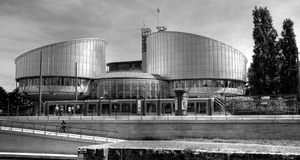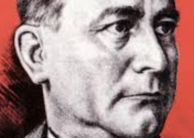Appellate Attorney as Storyteller: A Postmodern Analysis of Narrative in Appellate Briefs
By
2015, Vol. 7 No. 02 | pg. 2/2 | « Similarly, the attorney decided not to make the State the antagonist, because that cast the debate as too much of a David versus Goliath fight, and as Chestek put it, “in the real world David los[es] much of the time” (2008, 144). Instead, the attorney chose the county child services agency as the antagonist, because it fit with what she had decided was the theme of the brief, that overgeneralizations can cause injustice in specific cases. The county child services agency had found that this was a loving parent-child relationship, but it was still poised to sever that relationship as a result of current state law. Chestek juxtaposes his hypothetical attorney’s argument with that of the opposing party to the action, who had in his scenario argued a more typical, logos-centered argument based on legal analysis of precedent. This argument was based on the idea that the statute in question forbidding gays and lesbians from adopting children was subject to the lowest level of court scrutiny, a rational basis test, which typically results in courts refusing to overturn laws. For his hypothetical attorney’s counterargument, he says she decided that “while she needed to raise the issue of the appropriate level of scrutiny (in order to preserve that issue for subsequent appeals, if necessary), at the intermediate appellate level her client’s best hope for success lay in showing the irrationality of disrupting a stable and loving home” (Chestek, 2008, 154). In other words, though the attorney needed to make the legal arguments, the most compelling argument she could make was one based on narrative, on letting the judges into her client’s story to feel her client’s struggle and to personify that client as much as possible.In other cases, it may not be desirable to let the judges into some aspects of the client’s story. Narrative is useful in such cases in order to cast the client as an archetype of sorts, an everyman who battles a large and unjust system. In her article “Once upon a Time in law: Myth, metaphor, and authority,” Linda Edwards (2009) discusses the case Miranda v. Arizona and shows how the appellant’s brief casts the case as a creation or birth story. The case, which is the one from which what are known as the Miranda rights arose, was a criminal case heard by the US Supreme Court in 1966. Ernesto Miranda had been accused of kidnapping and sexual assault. He was arrested and interrogated without being given the right to counsel. After this interrogation, he signed a confession. An attorney was appointed to represent him afterwards, but by then it was already too late (Edwards, 2009, 891-92). First, it is clear that an attorney representing Ernesto Miranda would want to avoid the use of narrative that Chestek described of allowing a judge to enter the client’s personal story. Miranda was accused of serious crimes, and delving too deeply into his personal story may make a judge think that finding in his favor would be tantamount to letting a dangerous person out on the streets. Instead, his attorney began his discussion of the current status of the law regarding coerced confessions with the sentence, “We deal here with growing law and look to where we are going by considering where we have been” (Edwards, 2009, 892). In her article, Edwards emphasizes this sentence as showing a narrative move from the “distant past straight to an imagined future” (2009, 892-93). The brief then moves from that first sentence back to the Fifteenth Century, showing how the legal doctrine against coerced confessions developed through time to recent court precedent. The recent court precedent was troubling, in that the Supreme Court had provided no definitive statement that there was a right of counsel in police interrogations. Instead, there were cases where there was no clear majority, but merely a plurality of concurring opinions that addressed the present issue before the Court but did not make a wide-reaching statement of law on the issue. According to Edwards, this situation, as described by Miranda’s attorney, created a narrative gap that the reader naturally wanted to fill by making a clear statement against coerced confessions and clarifying the law on the issue (2009, 894). The attorney moved the narrative forward by saying about the right of counsel in interrogations that “The right does exist. . . . This is not the result of a single case . . . Rather there is a tide in the affairs of men, and it is this engulfing tide which is washing away the secret interrogation of the unprotected accused” (Edwards, 2009, 896). According to Edwards, Miranda’s attorney’s argument is an example of the primary archetype of a creation or birth story (2009, 897-98). The analysis section of a brief typically begins with a statement of current law. However, if Miranda’s attorney had begun with a bald statement of current law, he would be implying that the current law was the appropriate starting place for the court’s analysis. From that position, it would be difficult to argue that the current law should be changed, as he would already have set forth current law as normative. Instead, Miranda’s attorney uses narrative elements to create a broad story of the law, beginning, not with current law, but with the law as it existed several hundred years before, showing how this law has evolved and should continue to evolve. The narrative itself calls the reader, the appellate judge, to complete the story and cause this right of counsel in interrogations to be created or born. This use of narrative makes particularly clear that there is an opportunity in appellate briefs to tell stories that have not been heard in the modernist emphasis on pure legal analysis. Through pure legal analysis, Miranda’s attorney would not have been able to argue that a right of counsel in interrogations was merely waiting for the court to call it into being. Through pure legal analysis, the attorney in Chestek’s article could not argue that the family unit in that case should be victorious against applying an unjust law. Likewise, the use of narrative in appellate briefs gives an opportunity for marginalized groups who have been underrepresented in the legal process to have their voices heard. In her influential article, “Can the subaltern speak?” Gayatri Spivak (1988) states that discourse tending to portray the subaltern as Other is itself designed to reinforce oppressive power structures. Thus, those who would speak on behalf of that Other are, by pointing at them as Other and thereby needing a spokesperson, take from the subaltern their voice as surely as those power structures against which they are attempting to speak in the first place (Spivak, 1988, 280). When Spivak speaks of the “subaltern,” she is talking about the Other primarily in the context of postcolonial India (1988, 284). Thus, she contemplates the British and other Western European power centers as the Subject and the native Indian population, particularly the poor, lower castes and women as Other. When historians have attempted to describe the subaltern’s point of view, they have consistently done so as Westerners looking at the Other. This discourse is itself oppressive, according to Spivak. For that matter, the subaltern themselves cannot speak, because the language they speak about oppression is within the confines of that same discourse (Spivak, 1988, 280). Postmodernism gives an opportunity to move narrative discourse away from the language of oppression, because of the postmodern rejection of modernist essential ideals. Just as there is no one “truth” under postmodernism, there is no one experience that can be held up as the ideal experience, with all other experience relegated to the status of Other. As bell hooks states in her article “Postmodern blackness,” “[r]adical postmodernism calls attention to those sensibilities which are shared across the boundaries of class, gender, and race, and which could be fertile ground for the construction of empathy – ties that would promote recognition of common commitments and serve as a base for solidarity and coalition” (2001, 2481). Thus, rather than the dichotomy of one experience that is normative and one experience that is Other, there are under postmodernism a multitude of different experiences, which have points in common that reach across racial, class, and gender lines. This is not to say that narrative, or even postmodernism, is the panacea for the problem of marginalized groups being excluded from the legal process. If asked whether the subaltern could speak through the appellate process, Spivak would probably answer no, if for no other reason, then because all too often, other people would be speaking for them. After all, nearly all the speaking that is done in the appellate process is done by attorneys representing people, not by the people themselves. The idea of anyone having freedom to speak in such a context where everyone speaks through a representative is somewhat counterintuitive, especially where so many attorneys still come from society’s powerful and privileged. However, Spivak would probably say about these attorneys what she said in an interview with reference to a young, white male who despaired of ever having a place in which to speak to the injustice of the oppressive system within which he personally knew so much privilege: “Why does he not develop a certain rage against the history that has written such an abject script that he is silenced? Through a historical critique of his own position, he will see that he has earned the right to criticize, and he will be heard” (Fulford, 2001, 423). This is how narrative affords an opportunity for subaltern groups to enter the appellate process in a postmodern world. Through the use of narrative techniques that show the subaltern as multidimensional people struggling to preserve their family units, or caught up in the great narrative process of a new law being born, they are not seen as Other but as people sharing a common humanity. As bell hooks states, “Postmodern culture with its decentered subject can be the space where ties are severed or it can provide the occasion for new and varied forms of bonding” (2001, 2484). Rather than one truth that applies regardless of circumstances, postmodernism says that truth varies based on a potentially infinite number of circumstances. Certainly, the existence of so much difference could drive people farther apart. However, it is also possible that allowing for the value of so many different experiences could show that all of us have elements of our stories in common. It may not make for the most riveting courtroom drama, but narrative in appellate briefs could lead to something more significant. Through narrative, a judge reading an appellate brief is invited to see a party to a lawsuit, even one of a different racial or ethnic group, a different gender or different socioeconomic circumstance, as sharing in a common struggle. ReferencesAnderson, H. A. (2010). Changing fashions in advocacy: 100 years of brief-writing advice. The Journal of Appellate Practice and Process, 11(1), 1-17. Chestek, K. D. (2008). The plot thickens: The appellate brief as story. Legal Writing: Journal of the Legal Writing Institute, 14(1), 127-69. Docherty, T. (1993). Postmodernism: A reader. New York: Columbia University Press. Edwards, L. H. (2009). Once upon a Time in law: Myth, metaphor, and authority. Tennessee Law Review, 77(4), 883-916. Fulford, S. (2001). Gayatri Chakravorty Spivak. In J. Hawley (Ed.), Encyclopedia of Postcolonial Studies (423-24). Westport, CT: Greenwood. Grenz, S. J. (1996). A Primer on postmodernism. Grand Rapids, MI: Wm. B. Eerdmans Publishing Co. Hamilton, C. H. (1999). Effective appellate brief writing. South Carolina Law Review, 50(3), 581-89. hooks, b. (2001). Postmodern blackness. In V. Leitch (Ed.), The Norton Anthology, Theory and Criticism (2478-84). New York: W.W. Norton & Co. Robbins, R. A. (2006). Harry Potter, ruby slippers and Merlin: Telling the client’s story using the characters and paradigm of the archetypal hero’s journey. Seattle University Law Review, 29(4), 767-803. Sheppard, J. (2009). Once upon a time, happily ever after, and in a galaxy far, far away: Using narrative to fill the cognitive gap left by overreliance on pure logic in appellate briefs and motion memoranda. Willamette Law Review, 46(2), 255-96. Spivak, G. C. (1988). Can the subaltern speak? In C. Nelson & L. Grossberg (Eds.), Marxism and the Interpretation of Culture (66-111). Macmillan Education: Basingstroke. Suggested Reading from Inquiries Journal
Inquiries Journal provides undergraduate and graduate students around the world a platform for the wide dissemination of academic work over a range of core disciplines. Representing the work of students from hundreds of institutions around the globe, Inquiries Journal's large database of academic articles is completely free. Learn more | Blog | Submit Latest in Law & Justice |


















